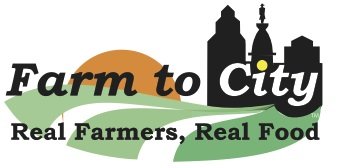May Seasonal Market Guide
Asparagus offinialis, herbaceous, perennial in the garden
Asparagus
Its season is short and sweet so add it to everything! Goes great with every kind of main dish, but for an interesting pairing try fresh rosemary. When cooked together, the rosemary flavor brings out a piney, fragrant, wild side to the asparagrass.
Soak in lightly salted warm water before grilling or roasting in the oven. It keeps the stalks plump and juicy. Try a raw shaved asparagus salad: shave them with a veggie peeler, then toss with olive oil, a little lemon juice, cracked black pepper and freshly grated parmesan cheese.
For more information and for an asparagus quiche recipe, read our blog post: Asparagus: A Waiting Game.
Fragaria × ananassa
Strawberry
The Lenape word for this fruit translated to "heart-berry.” It is the only fruit in the entire world that grows its seeds on the outside; average berry has 200 seeds. They used to be super-seasonal but more recent varieties have extended their season. There's even a variety called everbearing that grows in the summer.
Strawberries pair well with cereal, ice cream, cake and whipped cream. Ignore all savory recipes you find. Please stop pairing them with balsamic vinegar, it's never as good as just biting into the raw ripe berry itself!
Rheum x hybridum
Rhubarb
A perennial plant, like asparagus; most rhubarb plantings are productive for ten years.
Rhubarb recipes typically have a lot of sugar to balance out the sourness, but don't be pressured to add all that sugar. Embrace the natural tartness.
Savory rhubarb recipes are hard to find but they can make an interesting, earthy sweet-and-sour sauce for pork chops or seafood; add some star anise for a very complex combination.
E. vesicaria, B. vulgaris, B. oleracea
Arugula, Chard, Kale
We've waited all winter long for the return of fresh, leafy greens like Swiss chard, kale, arugula, spinach, bok choy, tatsoi, lettuce, and salad mixes. These greens are one of the most nutritious foods sold at the market.
Toss with spring carrots, radish and baby turnips for a quick healthy side salad.
Speaking of salads, learn to make your own salad dressings instead of buying the processed ones in the supermarkets. With ingredients this fresh you really only need to toss them with good olive oil, lemon juice or vinegar, a little dijon if you like mustard, add fresh herbs like parsley or dill, and an avocado or feta cheese to tie it all together.
Allium sativum, part of the Lilly or onion family
Garlic Scapes
Described as the tender stem and flower of the hardneck garlic plant but it's not as tender as you might think.
Harvesting the scape does not harm the plant; in fact if not harvested, the garlic will expend too much energy growing the stalk and flower resulting in small and flavorless garlic cloves later in the year.
Garlic scapes are a favorite ingredient for fermenters because it still stays crunchy when pickled. For a very fun pasta side dish, puree the garlic scapes with butter and local scallions (also in season!) and make some green garlic bread.
Plant Starts
Farmers who grow lots of veggies usually bring plant starts to the market at this time of year. We encourage everyone to try to grow their own ingredients. They might not need as much sun as you think.
If the farmers don’t sell all of the plant starts they bring to market, they usually put the plants right into the rows, so don't worry, all the plants eventually get a home in the dirt.
Download a printable version here!
Illustrations by Jacqueline Quinn







